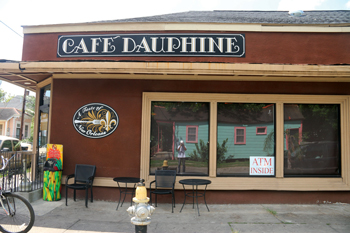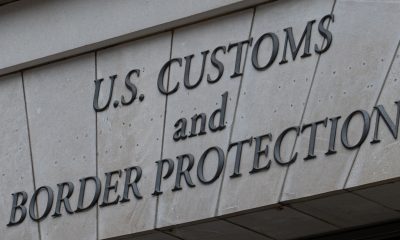National
New Orleans: A Tale of Two Cities

By Rhodesia Muhammad
Special to the NNPA from The Final Call
NEW ORLEANS – It’s been a decade since millions across the world witnessed the aftermath of what is known as one of the largest, costliest and deadliest hurricanes to ever hit the United States. With a death toll of nearly 2,000 and over $150 billion worth of damages, 10 years later, New Orleans is still recovering from this catastrophic event that left levees compromised and 80 percent of the city underwater beginning August 29, 2005.
“The lack of jobs is the simplest reason why New Orleans and the surrounding areas have not fully recovered their pre-Katrina populations,” said Allison Plyer, Executive Director of the Data Center. She also mentioned flood recovery was a contributing factor, particularly for low income residents who didn’t have the means to fix up their homes or renters who suffered from lack of programs aimed at non-homeowners.
The city had a population of about 485,000 people before Katrina and fell to an estimated 230,000 afterward. In 2014, according to the Greater New Orleans Community Data Center, the population has increased to approximately 380,000, about 78 percent of its population before the storm. Post–Katrina, the population of Blacks in New Orleans dropped by nearly 100,000, while Whites dropped by almost 10,000. Hispanics increased by approximately 6,000 as of 2013.
“New Orleans recovery is a tale of two cities,” said Ms. Plyer. “So what we’re seeing is growing income inequality. Many of our White households are doing much better, but Black households are not. We see employment rates for Back men are virtually the same that they were before the storm, but for White men they are much better.”
The opinion of recovery efforts is also split along racial lines, she noted. “So you’ll talk to White folks and they’ll say, ‘Wow! The city is doing much better. Never been better, all these great things are happening, entrepreneurship; the economy is great, our wages are up,…, etcetera, etcetera.’ But you’ll talk to Black folks and they’ll say, ‘Things are much worse, a lot of our neighbors aren’t here. It’s been such a struggle to rebuild. I don’t even have some of the business networks I used to have.’”
In the last 10 years, the median income for Black families grew by 7 percent and is $25,102 while the median income for White families grew by 22 percent and is $60,553, a difference of $35,451.
“Our area was hit the hardest,” said Dorothy Cook, resident of the lower 9th Ward, “yet, somehow it seems to be the slowest to recover. Ten years later, there are still too many abandoned houses, vacant lots, raggedy streets, grass so high it obstructs the view; making it an unsafe area.”
“Many of the people in my community didn’t return; not because they didn’t want to, they couldn’t. I only came back because the rent in the city was too high. I figured I might as well pay on my mortgage which was much cheaper. But the ordeal of rebuilding was beyond difficult. As a single woman, I felt I was taken advantage of,” she continues.
“Construction workers were overcharging me, I had four different electricians, and I was left in charge of making decisions I knew nothing about, such as, materials needed to rebuild, from nails to sheetrock, refurnishing and elevating my home,” Ms. Cook expressed. “And if I had to do it all over again, I wouldn’t come back.”
Slow and steady recovery
When hurricane expert Chris Landsea flew into Hurricane Katrina two days before landfall to test the severity of the storm, he discovered the circulation of this hurricane covered the entire Gulf of Mexico; a total area of 600,000 square miles. This set in motion New Orleans first ever mandatory evacuation.
The lower 9th Ward, which sustained up to 20 feet of water in certain areas, total population was 14,008 pre-Katrina, consisting of 98.3 percent Blacks. Ten years later, only 25 percent have returned home. Many of the houses in the lower 9th Ward still bears the “X” spray painted by rescue crews to signify that the home had been searched for dead bodies and a number next to it that represented the number of dead bodies found in the home.
“I will never forget the smell when I returned in the months after Katrina. The city reeked of dead bodies. I had witnessed destruction before, but this was on such a massive scale it seemed daunting,” said Marseyas Fernandez, President and CEO of MSF digital solutions. “Having a closer view of the inner workings after the storm, I thought it would take 12 years to get to a point where all neighborhoods were back to pre-Katrina level. The progress we’ve made since 2005 is no doubt better off than before Katrina, but that is no reason to blow the bullhorn,” said Mr. Fernandez.
“We are constantly conflicted between saying anything negative about the progress as not to discourage investment in our city and communities and telling the full true story of the recovery that is yet to come for so many,” he explained.
“I like this city and it’s vibe right now, but it’s still a land of the haves and have nots, of cliques that maintain status quo with respect to financial and social mobility, of a pie that still has not expanded enough to offer meaningful and expedited paths from entrenched poverty to the middle-class, where the housing choices are shrinking as gentrification pushes more families who rely on the centralized service industry to the fringes. I prefer to be where we are now over where we were any day, but lest not forget where we should be,” said Mr. Fernandez.
Nevertheless, the Big Easy, as New Orleans is affectionately called, has flourished in many areas. Known for its cuisine and being the birthplace of Jazz, it’s often referred to as the most unique city in the United States; home of the Essence Festival, the Bayou Classic, and Mardi Gras. Consequently, the aftermath of Hurricane Katrina brought the tourism industry to its knees, as it was the sector of labor hit hardest from the loss of jobs. New Orleans tourism industry is the largest employer in the area that had 70,000 people depending on a check from the hospitality industry before the storm. However, since 2005, the city is again welcoming 9 million tourists per year and has 600 more restaurants and bars. The city spent $400 million on hotel improvements, $350 million on improvements of the Mercedes-Benz Super Dome and $92.7 million on the Morial Convention Center.
One of the city’s most important booms has occurred in the growth of small businesses and the creation of an entrepreneurial ecosystem. This system has captured the attention of many industry leaders, bringing national retailers to New Orleans, such as Costco, Whole Foods and Walmart, creating over 14,000 jobs and generating $7 billion in capital investment in the past five years.
Entrepreneurial activity in New Orleans is 56 percent above the national average. PowerMoves.NOLA is a national initiative created to provide opportunity for minority entrepreneurs and designed to address the generational obstacles that prevent minority entrepreneurship. PowerMoves.NOLA’s mission is to increase the number of venture-backed minority-founded companies locally and nationally.
Michael and Suzette Dummett, started two businesses after Hurricane Katrina, a restaurant and a furniture store.
“The demand for furniture was great due to the hurricane. Then, once folks had rebuilt and refurbished their homes, sales declined. That’s why we changed into the restaurant business,” said Mrs. Dummett. “If it weren’t for Hurricane Katrina, I may still be working a 9 to 5 job and my husband Mike would not be working on his dream of owning a restaurant,” she continued. “Our home was destroyed, but not our dream to be independent from working someone else’s dream. We were forced out of our city which forced us to evaluate our lives. We rebuilt our home and our lives in New Orleans. Since we didn’t officially own a business before Katrina, I must say that we have been able to grow as independent entrepreneurs in spite of Hurricane Katrina.”
Every year since Hurricane Katrina wreaked havoc on New Orleans, a commemoration has been held. This year for the 10th anniversary of Katrina, the Urban League of Greater New Orleans is hosting a 3-day conference themed, “Rise: Katrina 10” on August 26-28.
“It is important to first commemorate the lives that were lost in Hurricane Katrina,” says Erika McConduit, President and CEO of Urban League of Greater New Orleans, “as well as those from near and far who opened their homes, gave countless volunteer hours, provided supplies, or invested resources in our recovery.” The Urban League also felt a responsibility to uplift an evaluation of the state of Black New Orleans, 10 years post-Katrina, since we were and continue to be the majority population in the city, she pointed out. “In order for New Orleans to truly become an exemplar of resilience and progress, we must make sure that all residents have equal access to opportunities that ensure social and economic mobility.”
The conference will examine the State of Black New Orleans 10 years post-Katrina, in areas such as economics, workforce, health, housing, education, criminal justice, the environment and civic engagement. They are also releasing a publication compiled of essays, editorials and research by local scholars that will lend an important perspective to the discussion of New Orleans’ recovery and rebuilding.
Housing and assistance struggles
When Hurricane Katrina hit the Gulf Coast, tens of thousands of people were displaced, leaving many left behind; this is still true today. The increase in rent in a city where 55 percent of its residents rent made returning home difficult for many people. CNN/Money recently named New Orleans as one of the worst cities in the U.S. for renters. Before Katrina, average renters spent 19 percent of their income on rent. The Data Center reports 37 percent of renters in New Orleans now spend more than 50 percent of their income to rent. The national average is 35 percent.
Pre-Katrina, there were 5,146 low-income public housing apartments in New Orleans, now there are 3,221 fewer low-income apartments. According to the Housing Authority of New Orleans, only about half of the 3,077 families who lived in the Big Four, the main public housing sites that were demolished, Lafitte, St. Bernard, B.W. Cooper and C.J. Peete, were back in New Orleans by 2011. Only 7 percent of those original families were living in the new developments that replaced the Big Four because there are less public housing apartments available for low income people on the demolished sites and the units now require higher incomes from renters, more than what was required prior to Katrina. There were also barriers for residents who qualified for rental assistance through HUD’s Section 8 program. Many who evacuated to other states found themselves in Section 8 housing, but HANO, either unable or unwilling to foot the bill, would not always accept a transfer back to New Orleans.
There has been a drop in many of the government assisted programs post-Katrina. Social Security had 26,654 people in 2004 and the latest report shows there are 6,000 fewer people on Social Security in Orleans Parish. Temporary Assistance for Needy Families in New Orleans reported over 3,000 families receiving state temporary assistance in New Orleans in May 2005. As of May 2015, that number was down to 463. There are fewer families receiving food stamps than before. In May 2005, New Orleans had 49,000 households receiving food stamps. In May 2015, Orleans Parish had just under 40,000 households receiving food stamp benefits.
“I left the city a day before the storm with 20 of my close relatives, but never returned,” said Linea Baker, a resident of New Orleans. “We drove 17 hours to Benton, Arizona and found a hotel to stay. The community really reached out to my family. They provided housing and financial assistance within a week of arriving,” said Ms. Baker. By November 2005, she accepted a job as a software developer and decided to stay in Arizona because she had lost everything in Katrina. She wanted to provide for her family without worrying about the struggles that plagued New Orleans.
“Being away from family is still my greatest challenge, but what Katrina has shown me is my resiliency during hardship and it helped define my character,” said Ms. Baker.
The Mississippi Gulf Coast was also slammed by the hurricane, leaving Hancock, Jackson, and Harrison counties mostly affected and causing 238 deaths. Like New Orleans, residents feel they have lost a part of their city that they will never get back; homes, churches, recreational facilities, historic sites and entire neighborhoods. More than 230,000 homes were damaged or destroyed. Harrison and Hancock counties were nearly three-quarters under the U.S. median income level. Ninety percent of the homes in Harrison County did not have flood insurance, which made rebuilding and returning home impossible for many.
While New Orleans was flooding, Bay St. Louis Mayor Les Fillingame recalled, Mississippi was dealing with 25 feet or more storm surge in some places and winds up to 125 miles per hour. However, compared to New Orleans, there was much less media attention in Mississippi. Mississippi, sustained $150 billion worth of damages. Meanwhile, federal Katrina dollars are paid for an extensive road and drainage project along Back Bay Boulevard; a road that leads to the IP Casino, where recently, millions have been spent adding restaurants, improving rooms and suites, and the casino air quality. Federal money was mostly used to replace public buildings, schools and roadways. One vital bridge linking Bay St. Louis to Pass Christian cost $267 million and $21 million for the new marina. Of the tens of thousands displaced, all but 1.5 percent did not return.
Today, New Orleans is better protected by a stronger, more resilient flood protection system than ever before. The region now has a $14.5 billion Hurricane and Storm Damage Risk Reduction System that includes the world’s largest drainage pumping station and a storm surge barrier stretching 1.8 miles long and 26 feet high. The U.S. Army Corp of Engineers and Sewerage & Water Board are constructing $2 billion in drainage improvements as part of the Southeast Louisiana Urban Flood Damage Reduction Project (SELA). However, it has been reported that the new levee system is still only strong enough to sustain a Category 3 hurricane. Many feel the city is still vulnerable to hurricanes, especially being situated below sea level.
Ten years later, New Orleans is well on its way to recovery. The citizens are stronger and more resilient than ever. WWL Eyewitness news began a highly successful station image campaign in 1990 called “Spirit of Louisiana.” It truly represents the hearts of the many people who were tremendously affected by Hurricane Katrina.








































